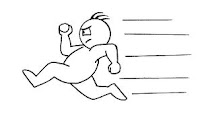There was a time, long ago, when the thumb was considered a useless appendage at the keyboard.
Officially, the thumb was not allowed on the keys at all. Personally, I think there must have been the occasional scamp who saw its practicality and surreptitiously snuck it up onto the keyboard. Papa Bach may have been one of these, as the use of the thumb became more or less normal during his lifetime.Once the ignored and much-maligned limb gained full access to its rightful place, there ensued decades of debate as to how it might be used. Stretching and pulling became the default instruction. Exercises were devised to train the innocent, unsuspecting thumb to press itself under the hand and wait there until it was time to play, at which time all it could do was fall on the note, not play it like its finger colleagues. This resulted in a bumpy-sounding scale and not a little discomfort. When the time came to play scales hands together, the bumps and discomfort might often be compounded. Here's my modest proposal: Let's figure out how to play the thumb like a finger, without falling on it, and in so doing establish the ground-work for smooth crossings and excellent coordination between the hands. If a passage sounds and feels uncoordinated, it is most likely because one hand is trying to do what the other one is doing rotationally. (See below for demos on rotation and crossings.)
1. The thumb plays rotationally, not by being pulled under the hand.
2. When crossing, the job of the thumb is to play its note and move the hand into the new position.
3. The thumb connects to the key at the fleshy side of the nail, not by falling on the first joint.
4. If the scale sounds uncoordinated, check the movement of the thumb at its crossing and compare it to what the other hand is doing.
Once the concept of crossing the thumb rotationally in a scale hands alone is mastered, create nutshell exercises at each crossing. It is not particularly helpful to play the entire scale up and back until the coordination at the crossings has been worked in.
For much, much more on this and other topics, have a look here:










